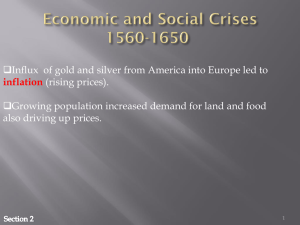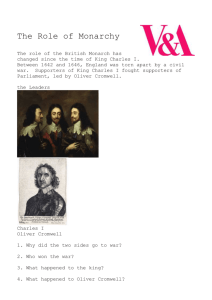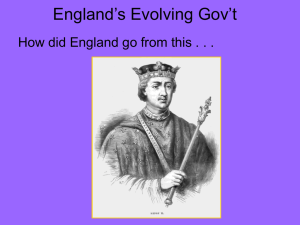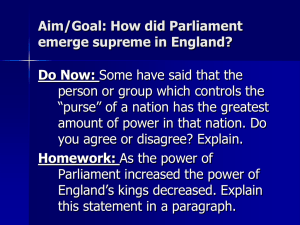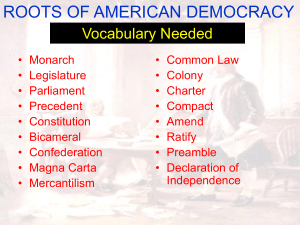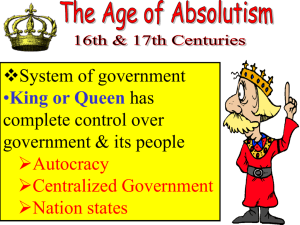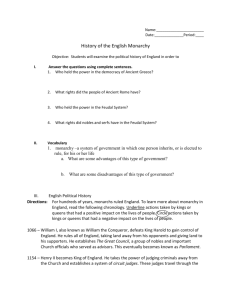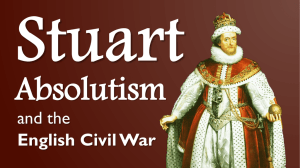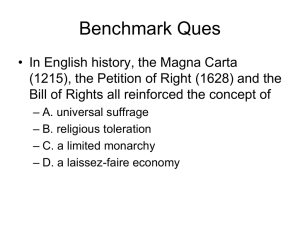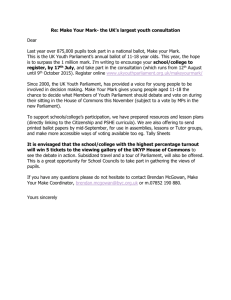1.5 Notes Demo Dev in England - Moore
advertisement
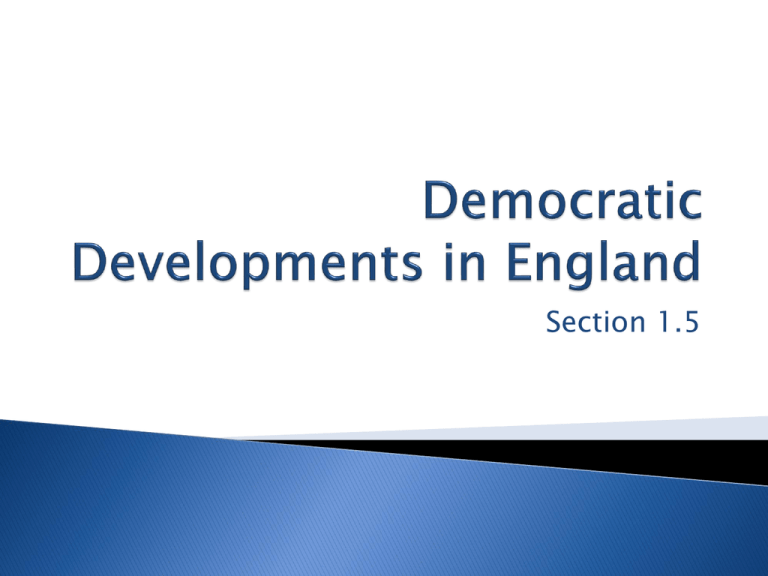
Section 1.5 To understand how England transition from feudalism to a constitutional monarchy During the middle ages: Feudalism- a loosely organized system of gov. among greater and lesser lords William the Conquerortook over England in 1066, made all lord swear fealty directly to him ◦ Census and efficient tax collecting system increase royal wealth and authority. Feudalism Henry II-expanded legal system ◦ common law- a legal system based on custom and previous court decisions Standardized crimes and punishments. ◦ Jury trials Henry II • 1215 King John abused his power and nobles revolted and made him sign the Magna Carta Magna Carta: document that makes rule of law a key principle of government, nobles had certain rights Magna Carta The “Great Council” evolves into Parliament- England’s Legislature Parliament wins the right to approve new taxes, which limits the power of the king. Houses of Parliament, London, England James I ◦ Religious intolerance ◦ Ruled with absolute authority ◦ Ignored parliament Charles I ◦ Imprisoned foes w/o trial ◦ Forced to summon parliament to raise taxes ◦ Parliament forces him to sign the petition of rights, which he later ignores Charles I 1. 2. Parliament revolts against Charles I. Oliver Cromwell’s (Parliament’s) army defeats the king’s troops in the English Civil War. 1. 2. Parliament abolishes (gets rid of) the monarchy, and Parliament declares England a republic, known as the “Commonwealth” Cromwell become a dictator Oliver Cromwell After Cromwell (and some other stuff) the Parliament invited William and Mary of Orange to come take the throne They had to sign the English Bill of Rights before taking the throne. RESULT: Parliament was now more powerful than the King William and Mary 1. What new practices did strong monarchs introduce in England? 2.How did the English Parliament limit the power of the monarch before the civil war? 3.Who was Oliver Cromwell? How does he compare to Charles I? 4. What three important documents in this section? Describe each.
